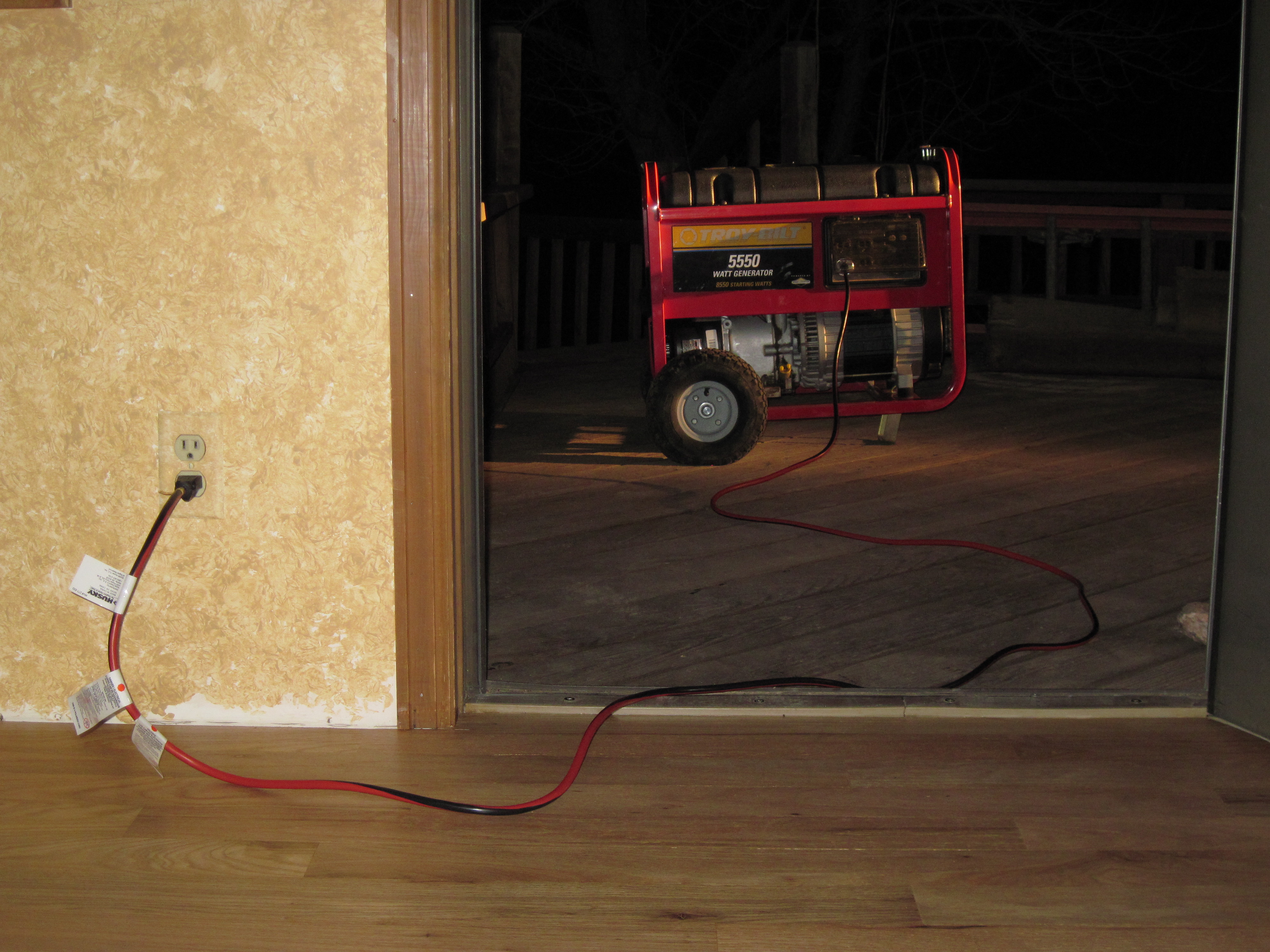
Update: This How-To was written for April Fools’ Day. It is not advised you attempt to make or even use this cable. The comments have made it very clear how dangerous to you and others using this cable can be. The image above is not of a full male-to-male cable, only the ground is connected, and the generator is not running.
We all know Ethernet has the crossover cable, cars have jumper cables, and RS232 has the null modem. Well, it is about time our wall sockets get their own crossover cable. This crossover cable is great for running power to a circuit disconnected from power. Maybe you are out of fuses, the breaker is broken or you just don’t want to go check the fuse box when there is a murderer about. This cable makes a great gift for even the most loathsome of acquaintances.
This an April Fools’ Day post. You should not do this!!!
Warning: These are Mains voltages and currents we are working with. If you do not know why you should not attempt this, you should not attempt this.
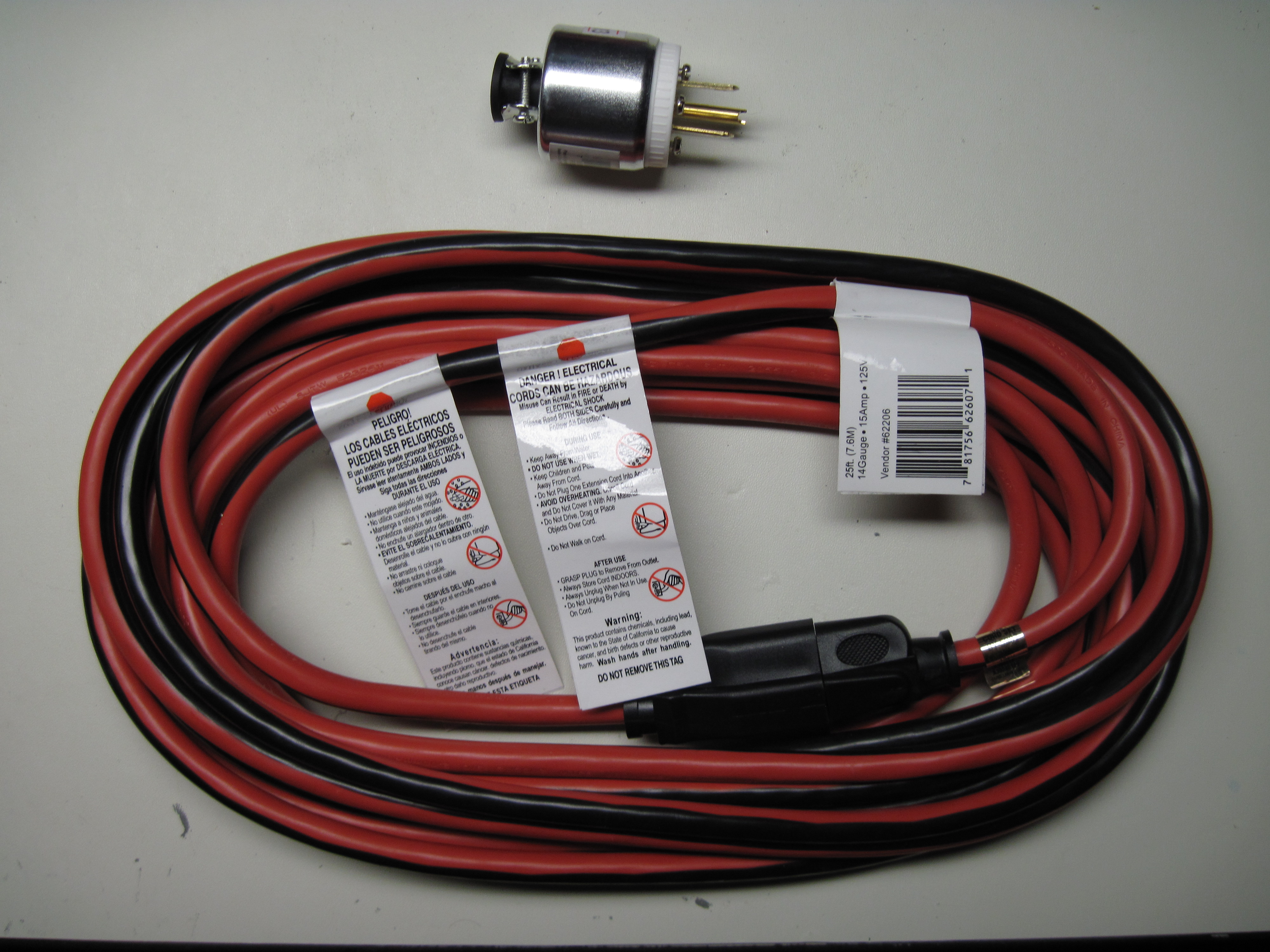
You will need:
- 1 Extension cord.
- 1 Male extension cord repair connector.
- Tools to strip the extension cord, and attach the connector: Knife, wire strippers, and screwdriver.
- Respect for mains voltages and currents.
If your extension cord has warning labels, read them.

Cut the extension cord to the desired length.
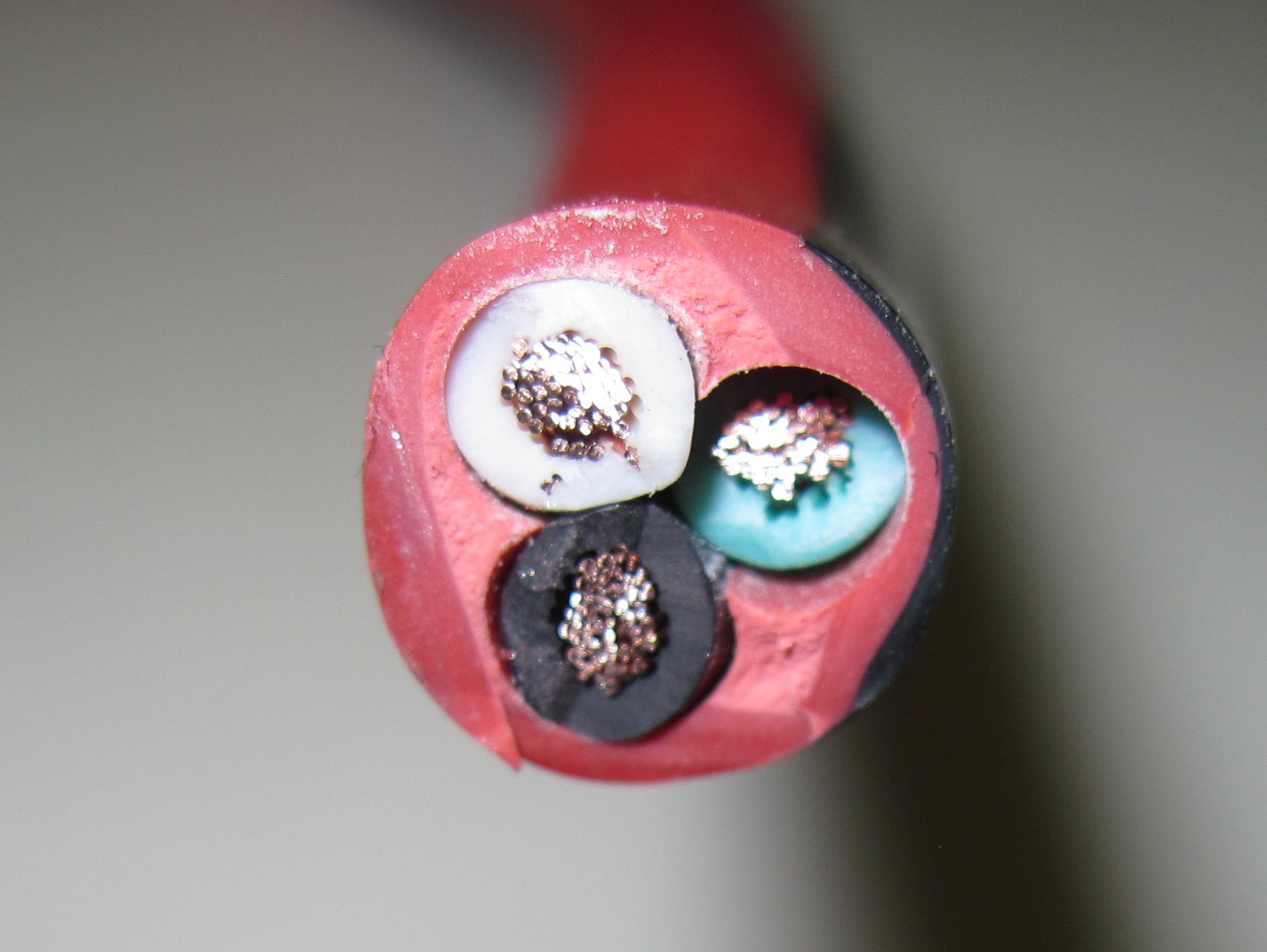
Strip about one inch (2.5cm) of the outer insulation from the part of the cord that has the male plug.

Strip about 3/8 inch (1cm) of each of the conductors. If there is a strip gauge, use it for a guide instead. Twist each of the stranded conductors to prevent fraying and possible shorts later.
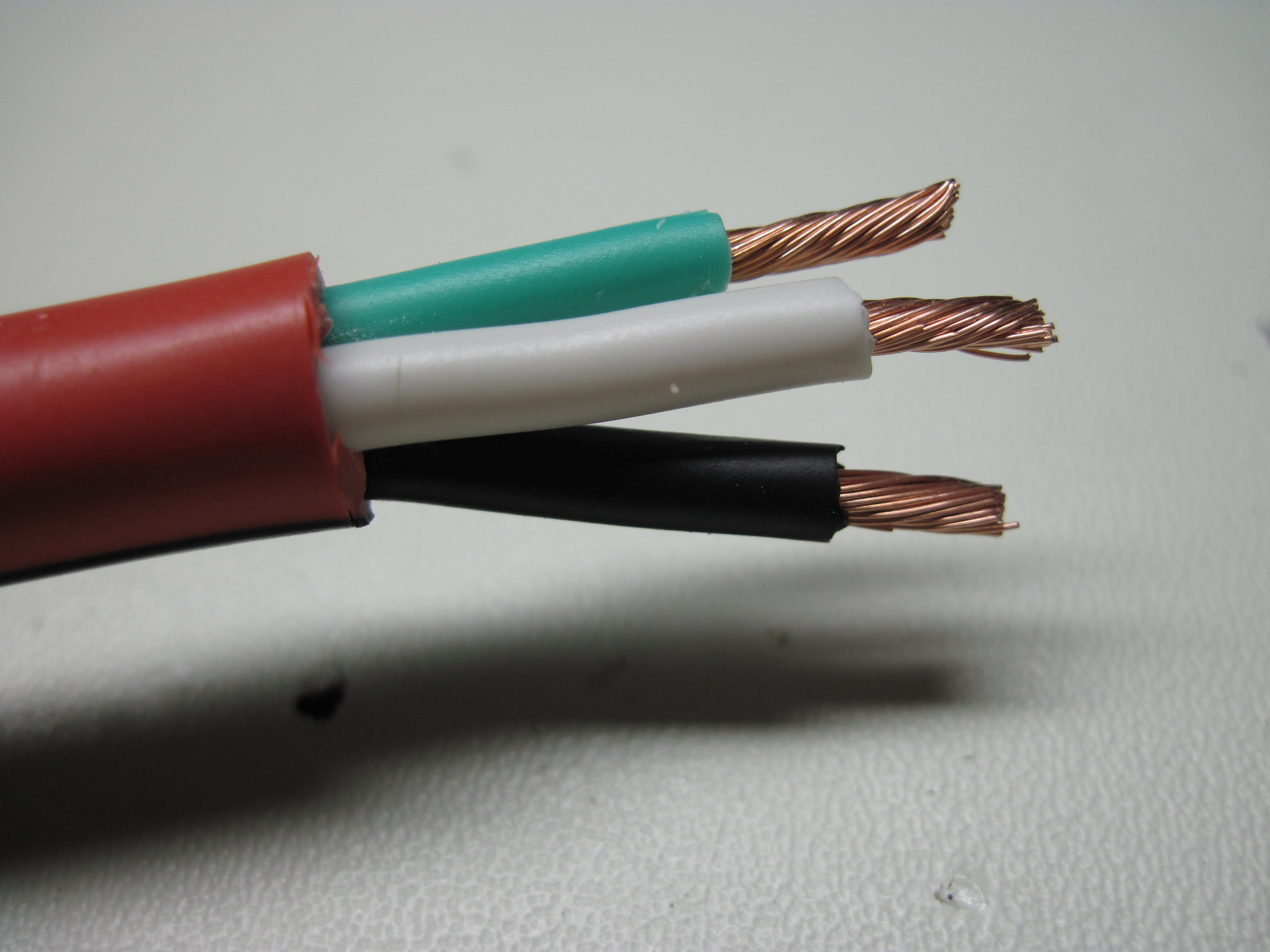
Slide the shroud over the cord.
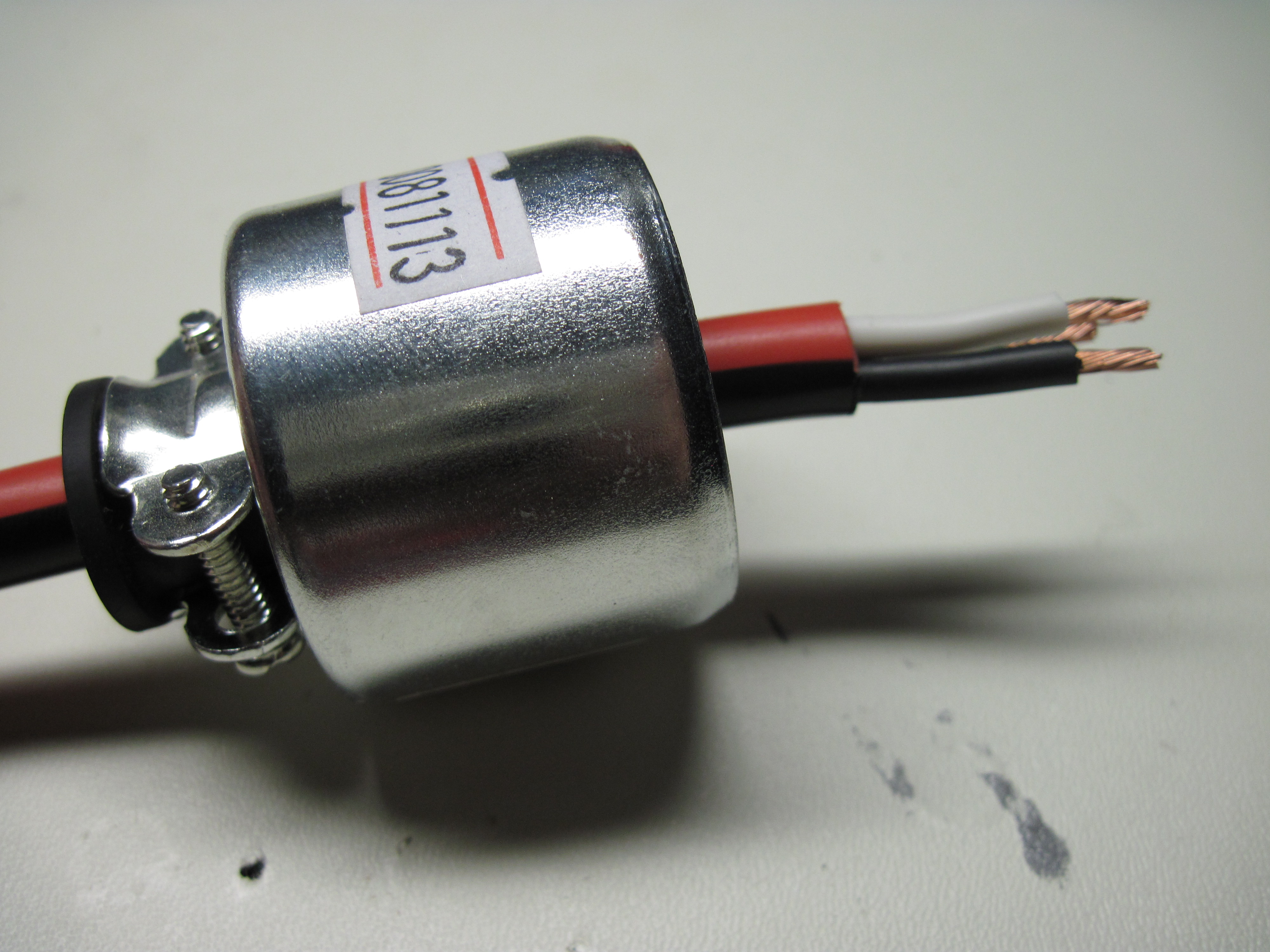
Screw the conductors into each of their respective terminals on the connector.
- The Green or bare conductor goes to the ground conductor terminal. It often has a green screw.
- The White conductor goes to the grounded conductor terminal. It often has a silver-colored screw.
- The Black conductor goes to the ungrounded conductor terminal. It often has a gold-colored screw.
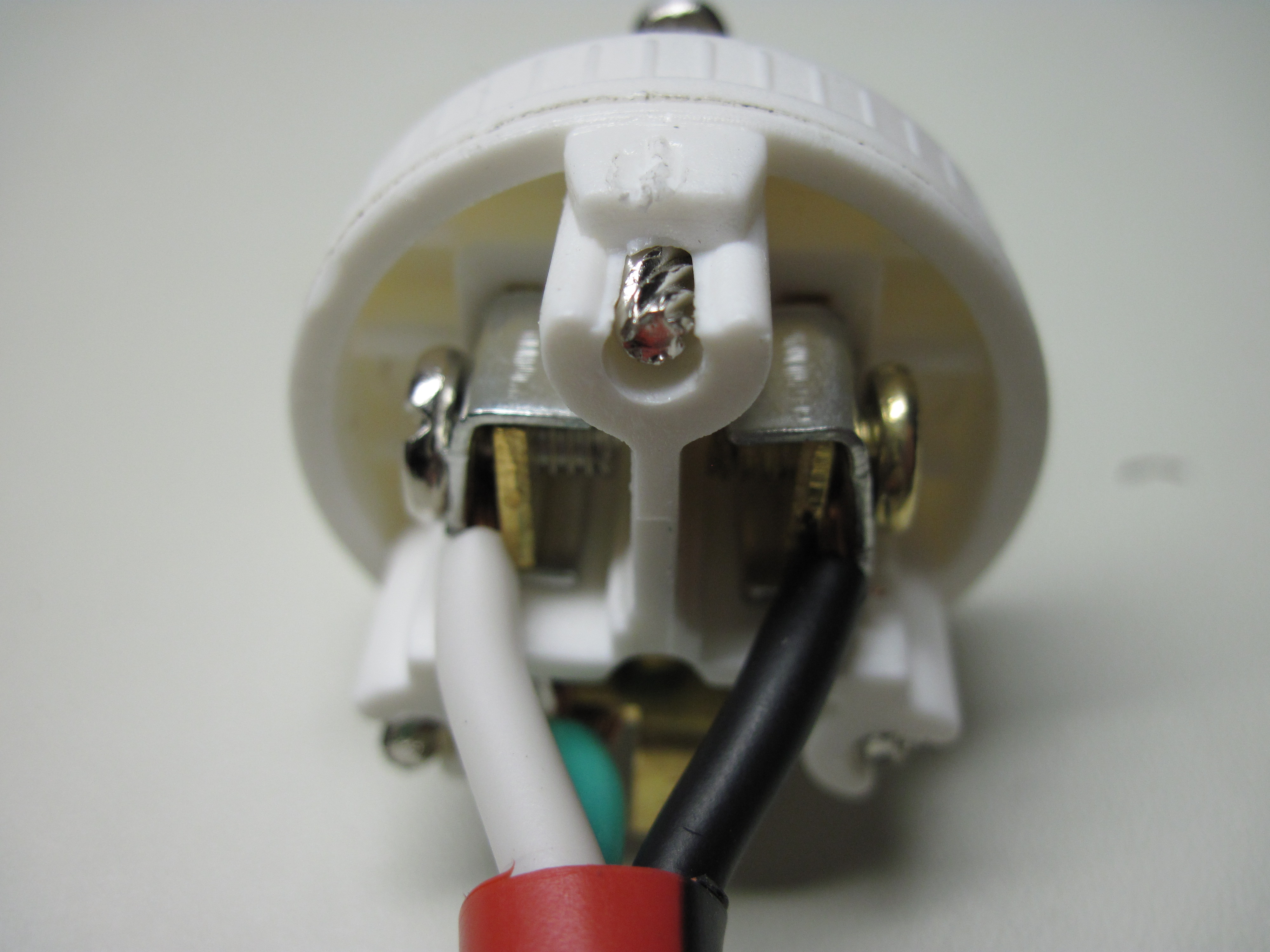
Use a multimeter to check continuity and make sure there are no shorts.
Slide the shroud up to the connector and fasten the two parts together.
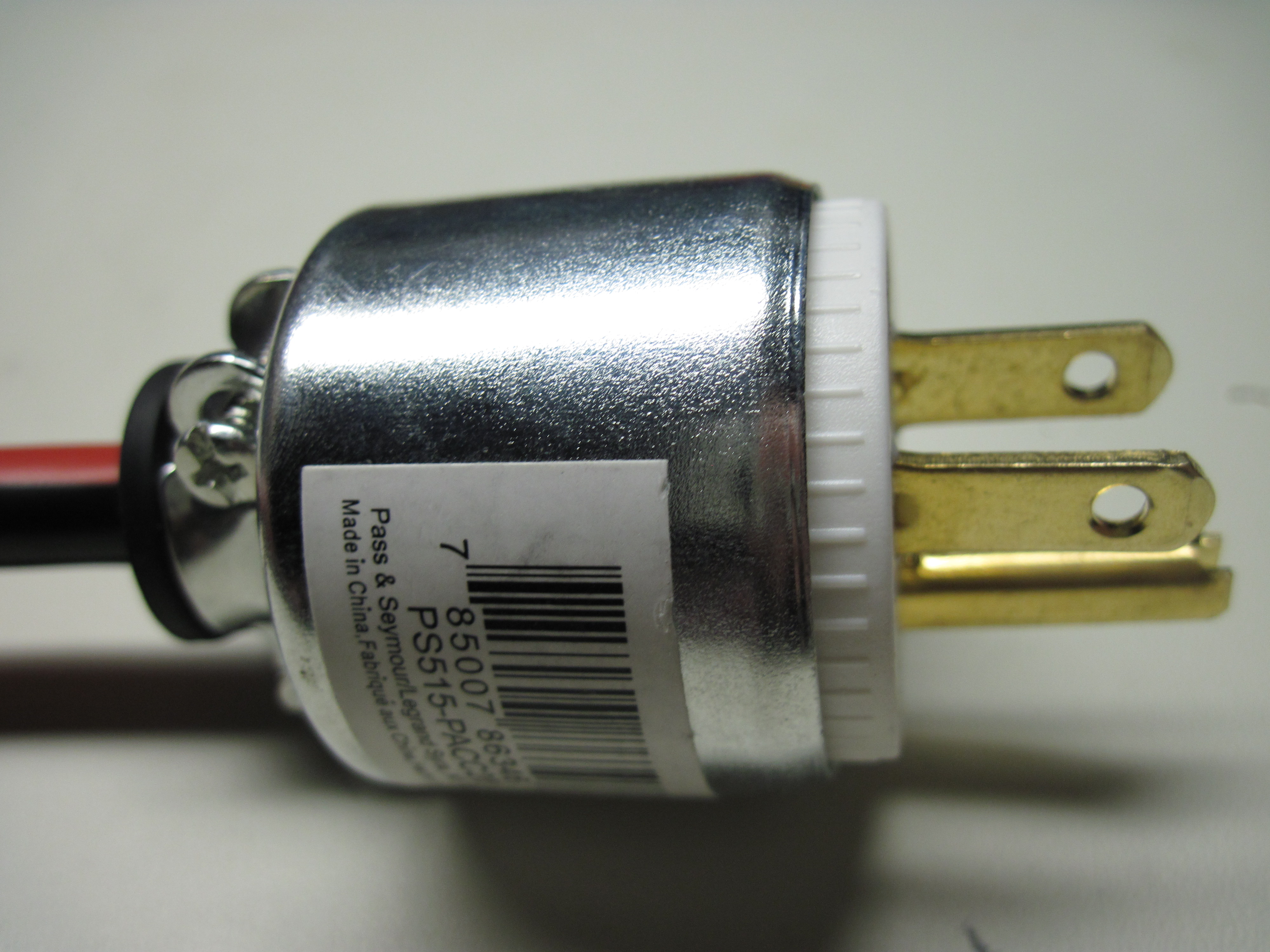
Secure the cable clamp.

There you have it, a finished Mains crossover cable.
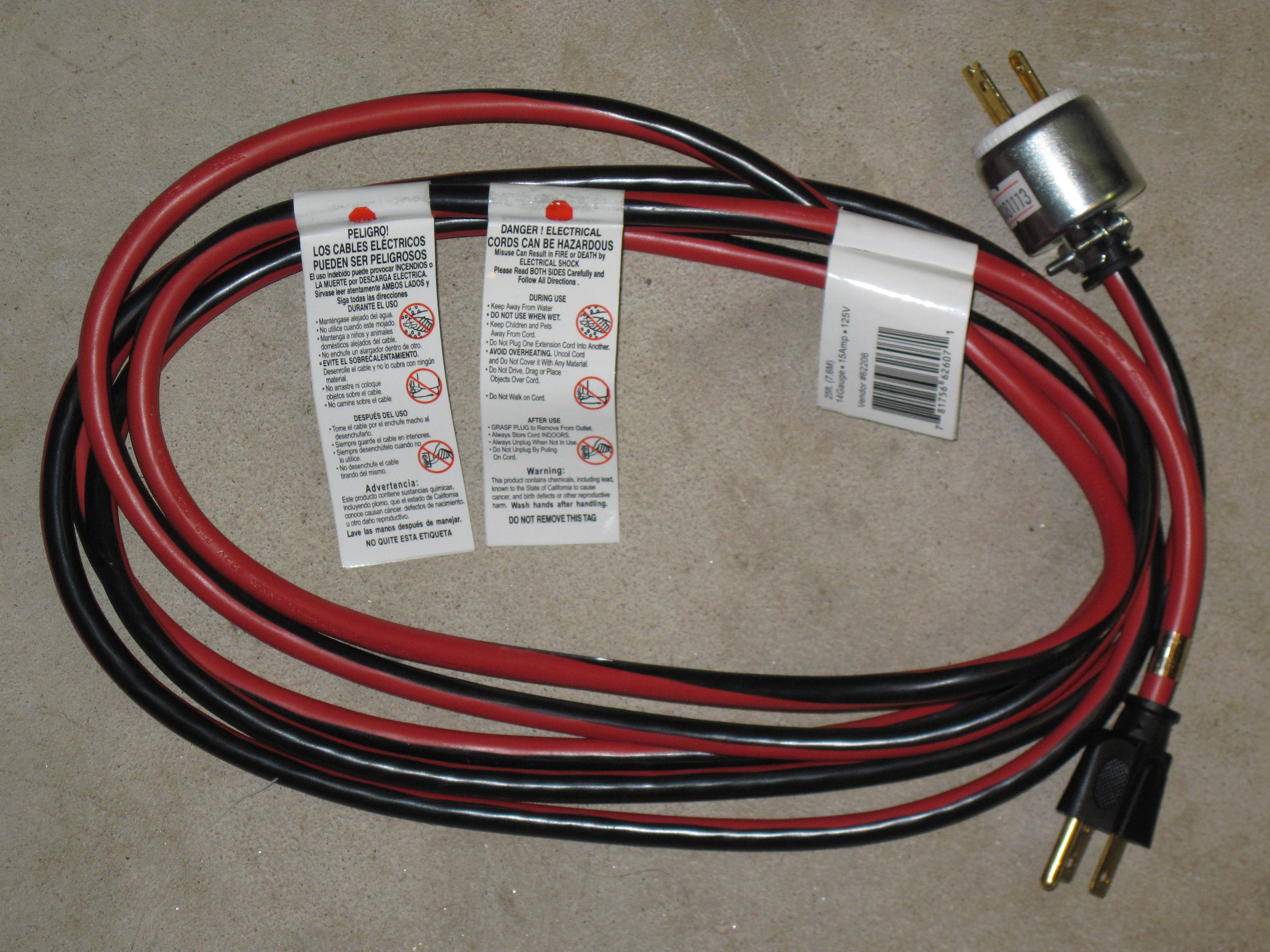
There you have it, a Mains crossover cable. How might you use this crossover cable?
















wow … this is the first time i have posted a comment after reading for so many years…. its funny how some fucking morons can not read tags :P
Don’t think I’ve ever seen this many concerned posts in a day on this site. Well done hackaday.
Now if you were really smart, buy two extension cords and a 240v plug for the generator. Wire it so the two cords are on opposite phases of the 240v plug. Plug the cords into two circuits on opposite phases of your house. Crack open a beer and enjoy sitting in your nice warm hot tub while the neighbors freeze in the ice storm.
Erase the post. It’s not a cute joke.. It’s a Killing Joke.
This is nice
http://www.androphones.com/animals-translator-for-android-phone-216.html
This ISN’T a joke, regardless of what their intentions might have been in posting it. It ISN’T funny. I know that some hacks are dangerous, and while I don’t have much problem with that, THIS IS DIFFERENT. This is a hack that, specifically, doesn’t put the hacker in the primary danger, it puts an unknowing electrical lineman in danger. Saying “HA HA, it’s April Fools. Everyone should know that it’s a joke and not take it seriously.” is reckless to the level of idiocy. There is a good chance that SOMEONE will try doing this because they saw the article and that someone will be killed or seriously injured as a direct result of this article.
This same setup is used by hundreds of thousands during extended power outages to power one bus in the breaker box – usually the one that the fridge and freezer are on. As long as it is used with care and respect, it is reasonably safe. True, you can kill or severely injure utility workers if you fail to kill your main – that’s where the personal responsibility comes in. If you are even remotely worried about doing this – DON’T! Go find someone who already has done it.
Oh, and yes, there is a good chance that if someone finds you feeding power back into the system from your generator (and, especially, if someone is injured because of it) you could be charged with something like reckless endangerment depending on what jurisdiction you live in.
There are such things as transfer switches that do this job quite well, oh and safely. I suppose this will stimulate jobs for the Fire / Rescue people if nothing else…
Please people, if you’re stupid enough to use this the wrong way (without switching off the mains or pulling fuses) then go right ahead, the frying of your moronic body will be entertainment for the masses.
I think everyone is missing a great pun here:
The results of this product could be… shocking!
I have done this during the 98 icestorm up here and used it power half my home.
The trick was simply to cut off the main switch just in case and it worked beautifully.
@lowlysoundtech: You are far less likely to electrocute yourself by doing this than you are to cause the death of the electric company repair man working down the street to fix your power.
Wow, I had no idea there were so many ignorant hackaday readers. If you don’t know enough to use this cable without killing yourself then you should kill yourself.
@Sir Blotto of the Bawx:
“To make a cross-over cable, the ‘neutral’ and ‘hot’ should be swapped, while the ‘ground’ stays where it is.”
Piffle and Balderdash! I say go one better and rotate each conductor one position counter-clockwise.
And soak the cable in gasoline first. Everyone knows a wet cable conducts electricity better.
I really hope no one actually tries it. Killer Jokes are not always funny.
While the voltage might be 110V at your cable, by the time it gets upconverted by the pole transformer the voltage will be much higher, easily enough to kill a linesman.
Stupid post – delete it.
Anyone that uses this site is smart enough to use this safely, (i hope?)
When your power goes off, just flip off your main breaker, and plug in your generator!
When you see neighbors lights on, unplug generator and flip breaker back on!
I myself use this, during snowstorms and whatnot. It’s really nice being able to keep your stuff plugged in and have electricity!
I just filed this one away in my brain for the end of the world/apocalypse.
So when the grid goes down for good and can power my shit.
I never thought I’d see the day when hackaday sinks so low as to tell you what everyone should learn when they are a child (and they do, in the UK at least): how to wire a plug.
Wow! 166 comments and counting.
The majority of which seem to be idiots thinking this is serious!
Or otherwise they know its an april fools joke and are still serious about how its irresponsible to april fools people with mains voltage articles, clearly not realising you’d need to be a person whos looked after 24/7/365 by social workers to even think this was a serious article!
Epic jesting HaD, well done! Well done too for not putting any subtle jokey stuffs in there, it confuses them ever more poignantly!
You guys are a bunch of pansies just off the main breaker. Try losing power for six weeks after a hurricane and it will seem like a better idea.
And a lineman would be an idiot not to check the lines.
After reading this website for a number of years this is the first time I have felt the need to leave a reply to a post.
I’m fully aware that this is an April Fools prank but as a professional engineer I would hate to think of this guide falling into the hands of someone who does not fully understand what they are doing.
It is extremely naive, if not reckless for hackaday.com to think that all readers will comprehend what they are doing and carry it out in a safe manner. Please remove this post before someone gets hurt!
So guys, call me dumb, noob, etc. but wouldn’t this work on a more permanent level if there was some form of Diode (i doubt they can handle mains but who knows im dumb:P)on either end of the main breaker? This post is particularly simplified due to it being 4-1 and all, but im thinking of serious application. A backup generator hooked up inline with the mains, with of course a switch as some commented, but what if used to supplement the house, is there some form of one way switch or diode or whatnots that would prevent backfeed, and still let main power in at the same time?
Everyone saying it is dangerous and stuff, wont anyone think of the lawyers?
CE/EE here. im all for dangerous cool stuff, and the watch-your-own-ass mentality. but this seems like a terrible idea.
for those who would be safe enough using this: they dont need instructions. its easy to imagine.
for those who need instructions to think something like this up: dont give them a step by step. they dont really understand what theyre doing.
if this is an april fools day joke, how does that make it better?! the danger is still presented even if it weren’t. take this down, id hate from someone to get hurt and put this site’s future in jeopardy
ffs, at least put a warning in the post that *if* you are using it to supply mains-level current to a circuit without mains voltage (i.e. in the case of power loss) that you //remove your circuit (your house) from mains// so that you don’t kill a line worker servicing the lines.
not disputing the usefulness of this post, but *some* semblance of responsibility would be nice. dumbasses frying themselves is natural selection in action. dumbasses frying some guy getting called out to work late on some downed lines is irresponsible.
lost a lot of respect for you guys with this one.
@NewGuy: yeah, that’s what grid-tie systems do, is synchronize the waveform of your other power supply (typically photovoltaic or wind power) to mains, so that it can switch from one to the other.
but grid-tie systems also turn off power to mains when mains goes down for that exact reason (backfeed).
my father:
“This will actually work but only for a 110 circuit. If you use the 220 outlet on the generator, and wire up an L6-30P plug and plug it into your dryer outlet, then you can run 220V stuff as well as 110V stuff in your house. But it is dangerous. To do it properly you need a knife-switch disconnect like I have at my house, and you need to have a #4 wire cable from the generator to the dryer outlet.”
NO NO BAD MONKEY !
1) It is April 1
2) Yes, yes, I’ve read all the “flip main breaker comments … ” It’s still dangerous because the system doesn’t enforce safety by default.
3) It will only work on half of your home. Most north american homes have two legs (feeds) of 120v entering 180˚ out of phase (hence 240v). The even numbered breakers are on one leg and the odd numbered breakers are on the other. On average, half the outlets and lights are on one leg and the half on the other. You plug a generator into one leg, the other leg is still dark.
Trying to run your house during a power outage is like this is just begging for it to burn down.
The wires around your house are like branches of trees. They start out thick and end up narrow at the sockets. When you feed it power the wrong way, the thinner cable inside your wall heats up and can melt its insulation, leading to a short circuit and a fire inside the walls.
That’s why “patch cables” like this are illegal in many countries where the officals have any sense.
Anyone who DOES know enough to mess with suicide cables does NOT need to be told about it… NOR do we need a goddamned step by step photo DIY on how to strip the wires and twist them. You could have summed this up in ONE sentence with NO photos…
but instead you wrote this for a complete novice… for a dumb ass teenager.. and there’s likely at least one on the internet dumb enough to die trying it.
Why don’t you show how to make a zip gun with real bullets while you’re at it… or maybe a bomb? No problem there, right? We pussies should know people aren’t going to make bombs just because you show them how… right?
I love HackADay but this is pathetically irresponsible.
@NewGuy
Yes A diode might rectify the problem. :)
This is Gods way of weeding out the stupid gene. Whoever thinks this is a good idea should not do this. I have worked with electrical inspectors for over 10 years. This IS not legal and is VERY DANGEROUS. Why would you post this? Idiots will do this!
We used one of these growing up to power an RV when it was “docked” with the house.
Also, be careful using something like this as each circuit in your circuit breaker is probably only 20 amps or less (that’s standard rating).
This is not an April Fools Joke.
It’s just a Fools Joke!
my thoughts on this:
This Works in a pinch with all the provisos.
Cry babies need a change.
April fools is the fact that they made the step by step, not that they made the hack. ‘Cause it is a Hack, a dangerous-if-incorrectly-used hack (the best kind).
And the fact that this generated 100+ posts of OMFG Danjar! makes this Less april fools, and more face palm..
I WAS going to post what a bad and dangerous idea this is but well I think that was more than covered. So instead I will just ask that this post be removed before someone is killed or some one files a lawsuit.
Ken
Electrician USN
Hackaday carebears are the worst thing.
“Don’t mess with mains power! You’ll die!”
“You might kill a linesman!”
“Wear a helmet! I don’t care if you’re only going 15mph!”
“Where are your safety goggles?! You’ll go blind forever if you take them off!”
“Don’t play in the road, you’ll get run over!”
“Don’t go outside, there are pedophiles!”
“Why aren’t you in your sterile bubble-suit?!”
“Fun is evil! You have to dilute it with copious amounts of safety!”
Awful people. An internet that tries to censor “unsafe” or “irresponsible” websites is not one I’d like to use. Get hired as a nanny if you need to vent, but don’t put that shit here; nobody’s going to take this article down just because you’re butthurt.
These aren’t sold because they are considered soo dangerous they are illeagal in some places. Also it might be noted that people have actually injured and killed utility workers doing things like this and you will be charged criminaly if that happens. That is why they say you must have generator isolation switches profesionally installed, it is a liability issue. You could lose everything including your freedom if you make an honest mistake, hardly worth it if you ask me.
This is coming from a electrical power engineer:
You would be exceeding the current carrying capabilities of the cable and the wall socket to feed the house. Let alone backfeeding into the breaker box therefore defeating the circuit breakers. Subsequently if the main breaker wasn’t turned off, the power would backfeed to the outside transformer on the pole (acting as a step up transformer), thus inducing deadly line voltages. This is extremely dangerous to line workers while performing repairs (many have died from backfeeding generators). When I worked on the storm restoration crew, we always looked and listened for running generators. You never know when some idiot is doing exactly this!
Yeah I know, “April Fools”, but honestly this shows you exactly how to KILL yourself or someone ELSE. Come on.
Jesus Fucking Christ
If Tesla were raised in the world of today, he would have accomplished nothing.
There is a 15 amp limit on most wall plugs and It’s not uncommon for generators to push 40 amps.
Better not draw too much power or you’ll be enjoying a tasty helping of plug-melt with a side order of house-burn.
I feel sorry for the poor line-men that are repairing the outage and get injured/killed because folks do stuff like this and don’t kill the main breaker.
While this is slightly dangerous, I have to say it’s kind of tame compared to power line hacks of the 1980’s. Heck, I remember reading a 2600 article back-in-the-day about hooking up a generator to the primary phone hub for a specific area code, causing murder and mayhem for all lines in that area. No offense to the reader base, but creating a CNC milling machine out of junk parts and adapting video games to your treadmill isn’t what hacking used to be, that’s what engineering used to be. Hacking used to be dangerous.
FFS at least show a picture of the breaker being turned off, one more photo would have killed you?
Dumbest most dangerous post on the planet. If you forget to flip your main breaker and backfeed into the grid you can kill linemen miles away. Do yourself a favor and go hack a fisher-price walkie talkie or something.
A fisher-price walkie talkie could kill a lineman miles away? Spectacular!
@operat0r:
Either your dad doesn’t know what he’s doing, or you misquoted him.
http://en.wikipedia.org/wiki/NEMA_connector#NEMA_L6
An L6-30P is a twistlock 240 volt 30 amp plug. It does not have a neutral, only two hots and ground. You would not be able to run 120 volt devices. On top of that, twistlock outlets are rarely ever found in a house.
A standard dryer plug is a 14-30P. Two hots, one neutral, and ground.
Using #4 wire would not allow you to supply your entire house, as a (normal) dryer circuit is only rated for 30 amps, and is wired with #10 wire.
@hawkeye:
I may be inexperienced, but (so far) I’ve never seen a portable generator without 15 or 20 amp breakers for the Edisons, so I don’t see how you could seriously overload a typical circuit…
If anyone actually attempts this, I’d recommend you don’t just disconnect your main breaker, but the breaker of the circuit you’re powering too. Depending on the impedance/resistance of your 240 volt appliances, you could actually end up with a bit of power on the other hot wire, which in turn may find its way back to neutral through 120 volt appliances on the (supposedly) unpowered hot wire. This could potentially damage your appliances, so isolate the circuit you’re powering from them by flipping that breaker.
On top of that, what about the neutral-ground bond in the main panel? Assuming the generator has a neutral-ground bond as well, you would end up with half the neutral current flowing through the ground conductor (not exactly safe). Or even better, what if Mr. Smartypants decides to be “safe” and drive a ground rod for his generator, and then connect it to his house with this cable? Can you say ground currents?
i’m gona go try this now!! i’ll post back in 5 minutes if im ok XD
The metal connector housing is clearly an april fools joke. At the moment you try to pull this connector that probably overheated… (Btw. you should use wire end ferrules or solder with lace wire in this kind of clamp.)
Come on… this kind of application almost demands an accident to happen.
Anyway… you should know what you are doing.
hahahahahahahahahaha reading all the crying about safety on this is hilarious. I used to live in a very rural part of Pennsylvania, everyone we knew had one of these. If you were “high class” you had the generator built into your house so that you didn’t have to lug it out every time. just throw the main circuit and turn it on big deal. Its that or freeze to death. Your choice when the power goes out for weeks at a time. Hehe, considering some of the comments they would have had a heart attack about the wood stove and letting a 12 year old hunt!
lmao hippies